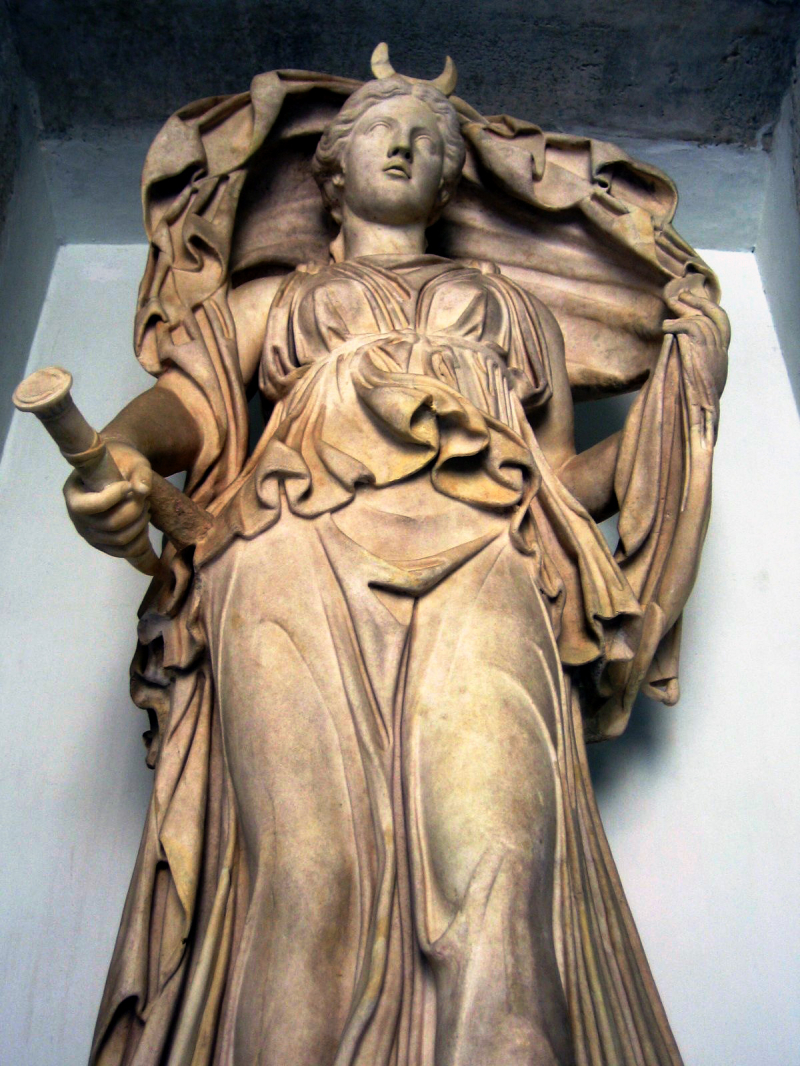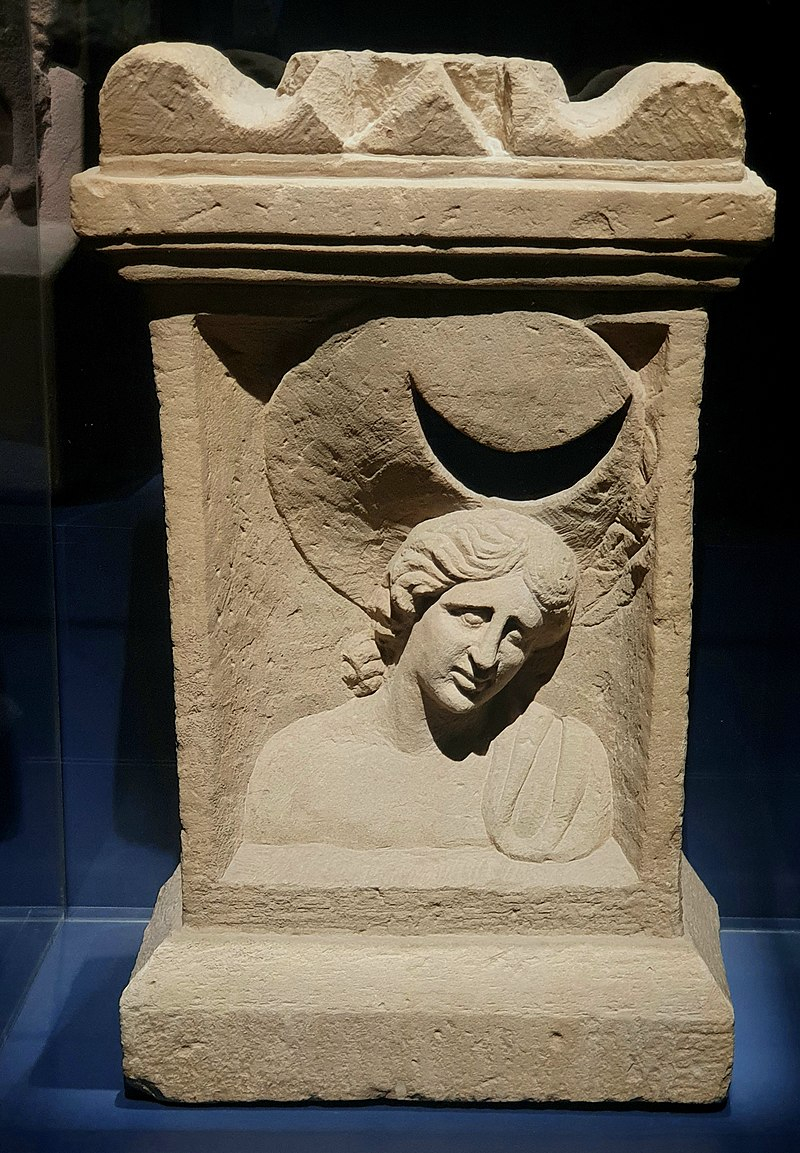Luna

One of the most famous Roman goddesses we would like to introduce to you is Luna. Luna is the divine personification of the Moon in ancient Roman religion and myth. She is frequently shown as the female counterpart to the Sun, Sol, as a god. Luna is also occasionally depicted as one of the three Roman goddesses, along with Proserpina and Hecate. Because both Diana and Juno are classified as moon gods, Luna is not usually a distinct goddess, but rather an epithet that specializes in a deity.
Luna's qualities in Roman art are the crescent moon and the two-yoke chariot (biga). Horace refers to her as the "two-horned queen of the stars" in the Carmen Saeculare, which was performed in 17 BC, and asks her to listen to the girls sing as Apollo does to the males.
Varro classified Luna and Sol as visible gods, as opposed to unseen gods like Neptune and deified mortals like Hercules. She was one of the deities proposed by Macrobius as Rome's secret tutelary. Sol and Luna might symbolize the breadth of Roman control throughout the world in the Imperial worship, with the goal of ensuring peace.
Selene was Luna's Greek counterpart. The stories of Selene are transformed as Luna in Roman art and literature. Endymion's myth, for example, was a favorite topic for Roman wall painting.













